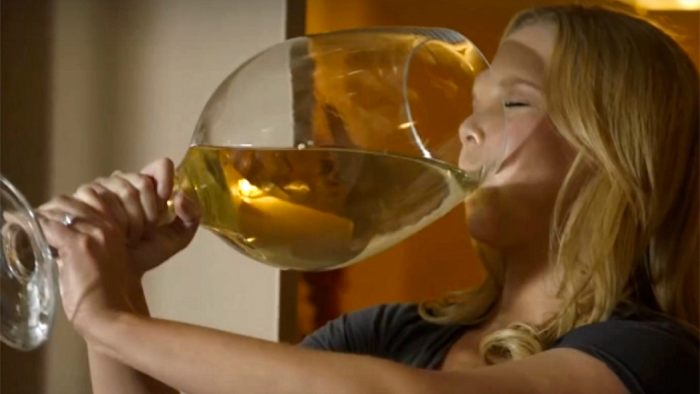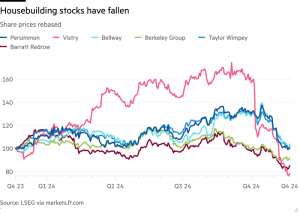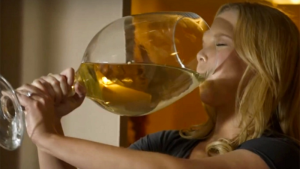The ultimate guide to the UK’s sovereign wine fund

Freedom of information victories are like buses: really great.
Fresh from getting HM Treasury to (finally) release the Deed of Indemnity that governs how profit and losses from the Bank of England’s asset purchase facility are handled, the Information Commissioner’s Office has come through for FT Alphaville once again.
And this time, it’s oenological.
Regular readers will hopefully be aware of our extensive coverage of the UK’s Government Hospitality Wine Cellar. In case you’re not, here’s a thing:
(NB: This article is roughly half UK Government transparency shenanigans, and half data stuff. If you’re only interested in the latter, skip to Parts 2 and 3 below.)
Dramatis personacronyms
GHWC: The Government Hospitality Wine Cellar, a wine cellar located for a century at Lancaster House in central London, and operated by the FCDO. The cellar is supposed to be self-funded by selling the wines it purchases.
FCDO: The UK’s Foreign, Commonwealth and Development Office (aka the Foreign Office), no stranger to a diplomatic knees-up.
GWC: The Government Wine Committee, a panel which selects the wines for the GHWC. It consists of a retired diplomat, who acts as chair, and four MWs.
MW: A Master of Wine, basically a highly-credentialed plonk enthusiast.
FOI: Freedom of Information (Act), a piece of legislation that gives the public the right to access information held by public authorities, with the caveat that many of those public bodies will do their utmost to prevent the release of any information.
ICO: The Information Commissioner’s Office, the body which (among other things) acts as an ombudsman between public bodies and people making FOI requests, such as FTAV.
FTAV: Us.
Part 1: Whine, whine, wine
When we first wrote about the GHWC, back in January, we ran the list of bottles therein past Jancis Robinson, the FT’s wine supremo (and an MW). As well as picking out some of the top choices, she told us:
The wines you list are mature classics worth a bomb and I do wonder what quantities they have of them? If several cases, then this must be one of the most valuable wine collections in the UK, but I suspect it may be just a few bottles.
As we wrote back then:
It’s a good point. As mentioned, the Cellar datasets are rather wonderful, but — except in a few instances — they’re bereft of quantities. Sad! …
Anyway, we’ve put in a freedom of information request to find out more about the specific quantities in the Cellar, so we’ll return in 20 working days with even more charts!!!

It took an FOI request, a (late) rejection of that request, a review of that rejection, a rejection of the review of that rejection, and an escalation to the ICO, but ladies and gentlemen: we got ’em (the quantities).
Our ICO case officer determined that, yeah, there’s no reason the FCDO should get to hide how many bottles of Château Cheval Blanc 1983 it has stashed in an SW1A basement. We also learned that the recent release of the GWC’s terms of reference — which we’d also requested — was also thanks to their intervention, so that’s nice. Go ICO!
We ALSO got some further sentences from the minutes of the GWC (more on those here), which had previously been redacted under FOI exemption 35(1)(a) (formulation of development of government policy) when the FCDO first replied to our request back in April.
One concerns its funding terms:
February 2017 meeting:


The May 2018 meeting minutes (which we already had) add:
The Chairman reiterated his wish to submit to minister Sir Allan [sic] Duncan regarding the future funding of the cellar.
What was (/is) happening here? We asked the FCDO, who declined to comment.
For the other two:
July 2014


April 2018


We just want to spell this out: the FCDO tried to keep those sentences secret on the grounds that they could disrupt the formulation or development of Government policy.

All the since-unredacted sections from April had something in common: highlighted bullet points. In retrospect, were these a clue that the FCDO knew they might be on shaky grounds?
On to the table…
Part 2: Having to do actual work
Naturally, the full GWC stocklist with quantities was supplied as a table that had been poorly embedded into a PDF:

After trying to spreadsheetify the table in the obvious ways (standard copy-paste, Adobe Acrobat extraction, asking ChatGPT to try*, crying, praying, going and having lunch instead) to no avail, we ended up doing it the old-fashioned way: really slowly.
Eventually, we had a rough-and-ready spreadsheet, which the patient people at CellarTracker kindly ingested into our digital “Alphavine” cellar (previously deployed here):

That allowed us to re-export the stockist with a load of tasty metadata such as values, vintners, varietals and other things not beginning with v.
Basically: totally great. At the time this stocklist was put together, presumably recently, there were 32,259 bottles (of any size, but mostly 750ml) of drink (of any type, but mostly wine) in the GHWC. We’ve rounded up, because some fractions occurred — including a lone quarter-bottle of Smirnoff vodka. Yummers.
One minor snag is with the value data. CellarTracker uses two measures: community value (as determined by its users) and auction value (from Wine Market Journal). Last time around, we mainly used community value, but as you’ll see there is, uh, value in both.
For the 52 (out of 517) drinks for which CellarTracker didn’t have a community or auction value, we researched the prices ourselves. In some instances, we had to use an adjacent vintage, which we know is a crime against wine but seemed like the most practical step. We’ve tried to make sure to disclose the source of the value figure wherever practical below, but feel free to castigate us via the usual channels.
With two drinks — the Bert Simon Serriger Herrenberg Riesling Spätlese 2007, and the Château d’Orignac Fins Bois Cognac VSOP Grand Cru 1878, the cellar’s oldest wine — we couldn’t find a usable price. It’s seems safe to suppose the latter might be pretty pricey.
Here’s a table:

And here, in tabular form with some basic metadata, is the stocklist:
We’ve added a “blended” value here: this is a simple average of the community and auction values, and is therefore certainly wrong but still possibly interesting.
Let’s make some observations:
Most popular
— Chapel Down Bacchus, an English white wine that the FCDO buys en masse (sorry, English: in big) for reception events, is currently the most popular wine in the cellar. Most of those are likely to be used up this year.
Most valuable
— Going by auction values, the priciest wine in the cellar (at roughly £3.5k) is the Château Latour Grand Vin 1961, a red from Bordeaux. Amazing, there are 107 bottles down there — meaning it might represent a tenth of the cellar’s valuation.
— By community value, the Krug Champagne Vintage Brut 1982 takes the biscuit at £8.7k, with a respectable 13 in the cellar.
With no further ado, let’s get datavizzay.
Part 3: Some dataviz
So, 32,259 bottles with about 32,259 bottles’ worth of liquid. We already knew that French reds held pole position for number of distinct wines — but are they quite so dominant in terms of overall bottles?
Yes.
Cool, great. Can we do that in a more exciting way?
It’s nice to see that the FCDO discovered the world outside of France and Portugal sometime around the year 2000 (OK, this is reductive but whatever).
We’ve repeatedly highlighted the cellar’s apparently excellent value:cost ratio — which stood at 4.78 according to the latest headline figures:
The most recent ✨biennial✨ GHWC report, covering the period up to March, says the cellar had an estimated market value of £3.8mn. Armed with full information about its contents, can we verify that figure?
Yes and no. As mentioned above, we’re dealing with two main sources of pricing data: auctions and CellarTracker community values. Perusing the big table, you may have noticed there is often a big gap between them.
A simple…
. . . requires choosing, somewhat arbitrarily, which value type to use. So, rather than choosing, we did two different ones:
— The blended value we previously created (a mixture of the averages of the auction and community values, and our own research)
— The maximum out of the auction, community and blended values for each wine
Bear in mind all the values we calculated will exclude the two drinks for which we wouldn’t find a value AND that these figures will not be exactly comparable because they are for different points in time AND that part-full bottles have been treated as full:
Even with the necessary adjustments, these figures suggest the GHWC’s stated valuation might be a little optimistic. We asked the FCDO to comment on their calculation method, and they declined to comment. Onwards.
Our valuation problem makes it difficult to visualise the relative worth of different wines and groupings without having to do everything twice. We’ll arrive at something resembling a solution to that problem — but first there’s a couple more areas worth, in the loosest sense, exploring.
We previously observed that the GHWC wines tend to score very highly on CellarTracker’s community ratings. Knowing the quantities of the wines involved shouldn’t shift this, but it does let us make a zany chart, and honestly what else are we doing at this point?
Because we’re journalists and therefore naturally inclined towards negativity, our immediate observation is that a handful of merely average wines seem to have entered the cellar. But, quite obviously, the vast majority are very good or better — with an average rating of 91.2, ‘Outstanding’. Slide your eyes towards the top left, and under ‘Extraordinary’ you’ll notice a decently-sized Château Latour Grand Vin 1961 triangle. Stay winning, king. 👑 🙌 😭
The natural next step would be to use quadrants to establish a price/score matrix. On the naive assumption that a 90-rated bottle tastes the same whether it costs £9 or £900, to compare things fairly we’d need some kind of scoring system based on price and rating. But, again, comparable valuation issues abound — which would we even use? Here’s An Attempt using our flawed blended value metric, replete with log scale shenanigans (as is our wont) for relative readability:
It is almost time to throw in the towel and let you do some DIY dataviz, but there’s one more piece of metadata that caught our eye — CellarTracker has data for when one should begin, and finish, consuming a given wine. On this measure, how much of the GWC is past its prime?
Quite a bit. 15,356 bottles, to be precise — or just under half. This is probably a highly contingent measure but . . . chart:
All right, we’re tired and there’s still another section of the article to go, so it’s time to put power in the hands of you, the reader. DIY dataviz moment?
(As ever, holla @ us in the comments if you’d like to see anything added to the above module, or if there’s something else you wish we’d visualised.)
Part 4: The end of the bottle
There’s not much more of value to add here, but it’s customary for articles to have conclusions — so let’s give it the old college try.
Other than allowing us to scratch a specific dataviz itch extremely hard, there’s a limited practical purpose to these figures. It’s nice to know that (relatively) cheap-and-cheerful Chapel Down is underpinning British diplomacy, and that the GWC is anchored by its position as a Château Latour whale — but these figures are in constant flux, and represent a mere snapshot.
Still, it’s worth celebrating that we have these figures at all: there is no credible reason that they should be hidden from the public, and we’re very pleased that the ICO came down on our side. It’s unfortunate, however, that this appears to have arrived hand-in-hand with the FCDO reducing regular transparency about the stockist.
So let us take advantage of the fact that this post is legally-speaking a piece of commentary to say:
If you’re somehow still thirsty for further wine coverage, here’s a teaser: the ICO have handily provided us with a table of what’s been released so far, and what hasn’t:
We’ll return once the case officer makes their final conclusions. Until then, stay plonky.
* The AI revolution continues to amaze (high res one and two):


Further reading:
— FT Weekend announces key appointments in its food and drinks section (FT) 👑👑👑👑
#ultimate #guide #UKs #sovereign #wine #fund


















